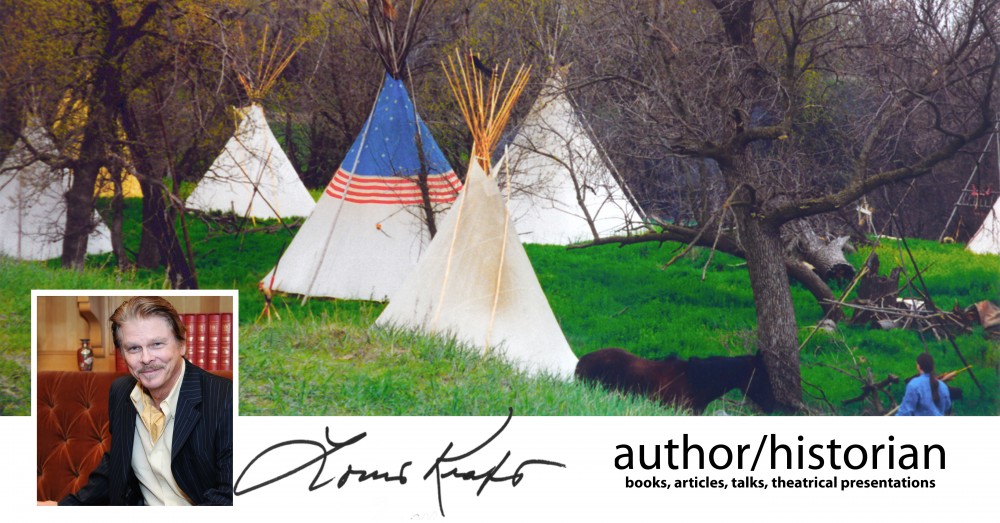Website & blogs © Louis Kraft 2013-2020
Contact Kraft at writerkraft@gmail.com or comment at the end of the blogs

“Sand Creek” (above) is Southern Cheyenne Peace Chief Gordon Yellowman’s interpretation of what happened at the joint Cheyenne and Arapaho village that thought they were at peace with the U.S. military in November 1864. The results of this attack—read butchery—were horrific. In my humble opinion it says everything we need to know about that tragic day of November 29, 1864, in Colorado Territory. (art © Gordon Yellowman 1996)
This is the first time that I have led a blog with artwork and then featured it later in the same blog. The reason is of extreme importance to me.
The Sand Creek tragedy has returned to my life with a vengeance; actually
for some time. Progress is good, but slow (I could give myself a few
nicknames here but won’t for I don’t want any of them to stick).*
And as in the past I have found primary source documentation
that is an eye opener.
To give you an idea of how much, … in the late 1980s I
had outlined a novel with Indian agent Ned Wynkoop
as my chief villain. I had without enough research
added Wynkoop to the list of Indian agents
who robbed their wards while lying to
their U.S. government employers.
One problem: Wynkoop didn’t do
what I originally thought.
I never wrote
that book.
OVER THE LAST 30+ YEARS I’VE LEARNED A LOT,
AND BETTER I LEARN MORE EVERY DAY.
To quote Yogi Bera, the late and great catcher of the NY Yankees
during the Golden Age of Baseball, “It ain’t over ’til it’s over.”
* Actually I hate nicknames, but some people ignore this, and no matter how often I state that I don’t want a nickname they insist upon stuffing one down my throat. This makes me cringe every time I hear one or see one in print. For example, I’ve been called “Kit” Kraft, and nothing I say or do has killed this name. It’s not my name, will never be my name, and just thinking about it makes me want to vomit. Luckily the jerk didn’t call me “Wild Bill” Kraft. For the reason why see: https://www.louiskraftwriter.com/2016/09/17/the-tom-eubanks-louis-kraft-ned-wynkoop-errol-flynn-connection/.
Sand Creek is a story of people
Sand Creek and the Tragic End of a Lifeway is a story of people creating a future, retaining a lifeway, race relations, survival, and it is of major importance to me. Although I am working in familiar territory this manuscript is 100-fold more difficult to write than any of the previous nonfiction books that I have written.
A short detour
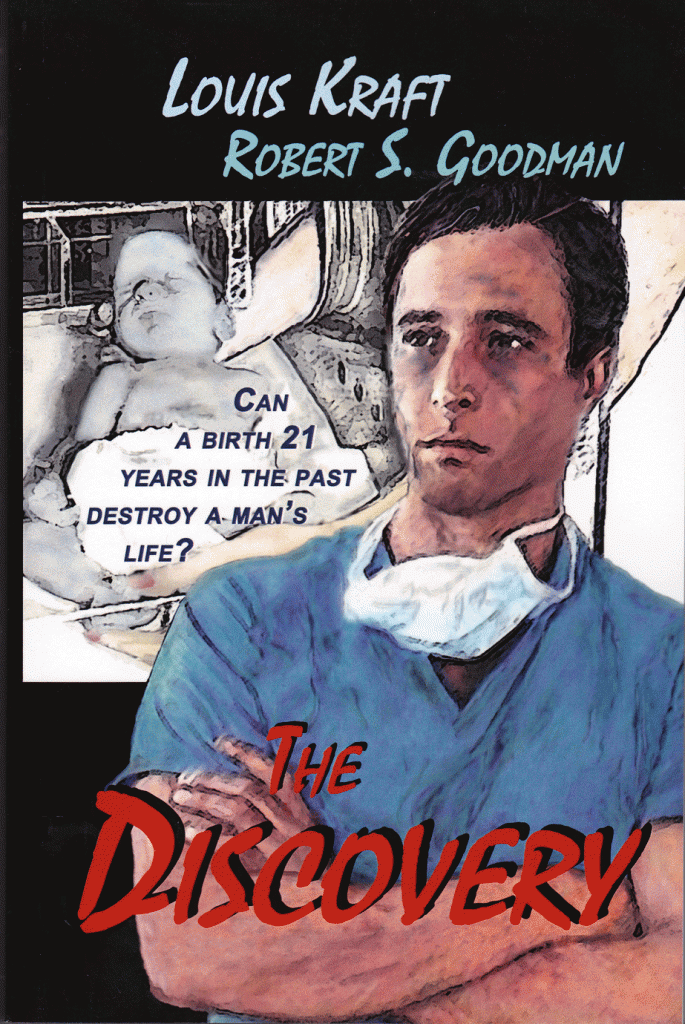
(book cover art © Louis Kraft 2016)
My recent novel with partner Robert S. Goodman, The Discovery, which took place in Los Angeles over two decades (between 1951 and 1973), presented me with a lot of information that had to be accurate (medical, legal, not to mention historical facts), such as when the 101 Freeway that cuts through the north side of downtown LA, through the Cahuenga Pass and into the San Fernando Valley before continuing north and west as it skirts the Pacific Ocean. For the record it didn’t exist in 1952. CNN news didn’t exist in 1973; I had never watched it (but I do now on the internet). The Discovery had an enormous list of facts that had to be correct. Yeah, that’s right, even when you write fiction you have a responsibility to stick to reality.
When you write nonfiction it is a crime to get creative with facts and distort or change or invent them to support preconceived premises.
Sand Creek hasn’t been easy
What did I say? Sand Creek and the Tragic End of a Lifeway “is 100-fold more difficult to write”? This is perhaps the truest statement that I have ever made about my writing world. Honestly, this story, and remember I don’t write lists of facts but about people, is a living-breathing nightmare. … My average day? Try five to six or eight hours of research and if I’m lucky two or three or four hours of writing. I’m not talking polishing here, simply trying to get facts that I think are accurate written.
Word-smithing comes later—much later.
I’m approaching the Sand Creek manuscript as a biography but with multiple leading players. The goal is to smoothly flow all the key players’ actions into a storyline that shows what they did without allowing it to turn into a jerked-together mess of telling. As in the past this is a work that is taking longer than anticipated. The plus for me here is that, and as in the past, I have a lot of very knowledgable friends that constantly supply information and run thoughts, questions, and ideas by me. They open my eyes to information that I hadn’t known previously existed, and believe it or not, some of this information has changed my views on key people and their actions.
Dr. Gary Roberts and the beginning of a friendship

This is Dr. Gary Roberts latest book (Abingdon Press, 2016), and in it he presents well-thought-out insights into to both Colonel John Chivington, who commanded the Colorado Volunteers that attacked the joint Cheyenne and Arapaho village at Sand Creek on November 29, 1864; and the second territorial governor of Colorado, John Evans. His book is available on Amazon.
Lately I’ve been enjoying a round-robin discussion with Gary Roberts, which began when my question of approximately how many miles would the Reverend John Chivington have been able to cover on a normal day’s travel during his first journey to Denver was forwarded to him. Gary kindly dug into it and answered me (and more than once on what he found). This opened an ongoing question-answer-thought provoking conversation that has led to a friendship.
During the last two or so months Gary has also opened my eyes to something that Wynkoop had done that I wasn’t aware of as well as other key questions I’m tracking on Chivington and others, and this includes primary source material on trader and interpreter John Simpson Smith that to date I haven’t been able to get my hands on, and by the way he is proving to be an unexpected surprise. I’ve also been focusing on Arapaho Chief Left Hand, and the more I learn about him the more I wish I knew.
Buddying up to John Simpson Smith
Actions—peoples’ actions—drive how I explore the people in my books, for what they did tells me who they were and what drove them. I cringe when someone tells me who they were. I don’t need opinions of who they were and neither do you. Also, I need to get as close as I can to walking in their shoes, boots, or moccasins as possible. Doing this is the only way I know of to prevent my bias from tarnishing how I present them in my writing. By this I mean that I must view and document their actions as they viewed them.
But first a little of LK and my lady
If you listen to some people who claim to be my friend I’m a loser, a failure, and an evil person. They secretly spread malicious rumors about Pailin’s and my life behind our backs.* For all the things that I’ve done in my life, I’ve done them while thinking that I acted correctly at all times.
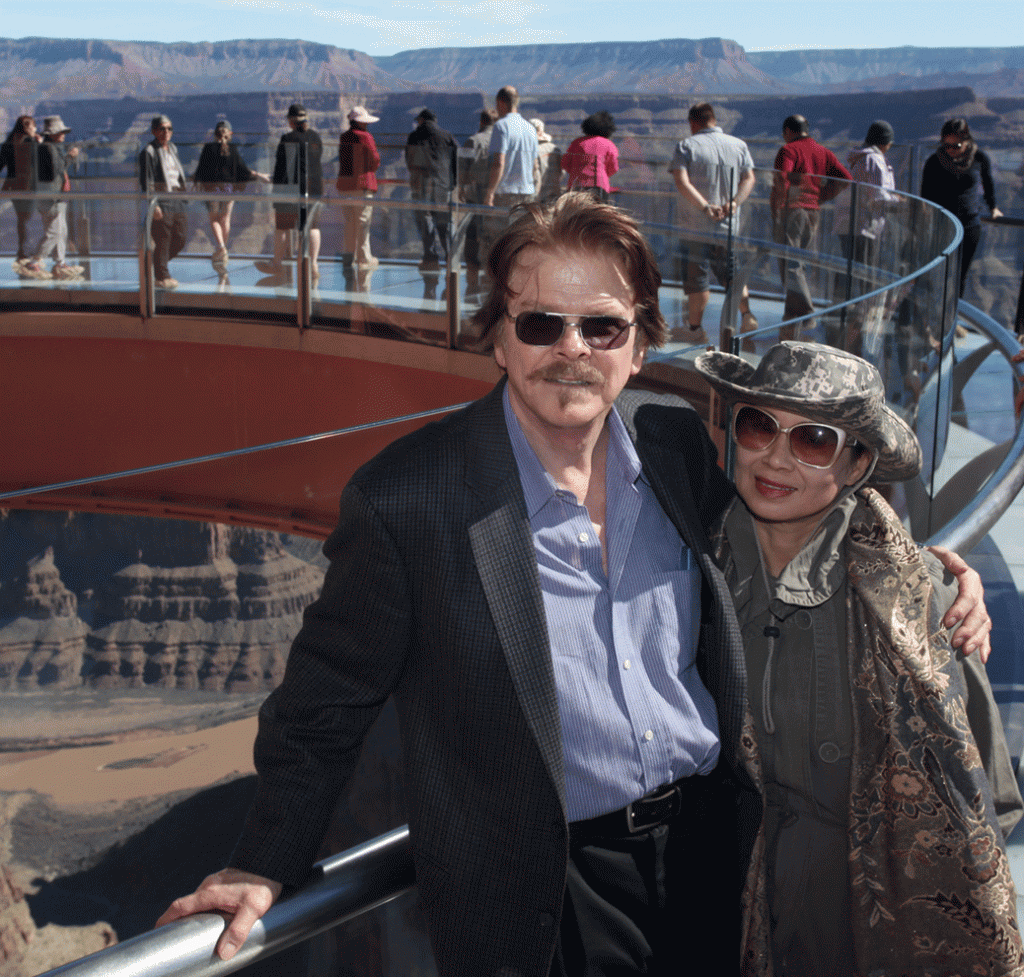
This is my lady and me on the Skywalk above the Grand Canyon in Arizona in late September 2013. We were one then and we are one today. Anyone who says different is a liar and asshole. (photo © Louis Kraft and Pailin Subanna 2013)
* I know a handful of people with Green Cards who are only in the United States to use our country, … that’s right, “to use our country” to their advantage and then desert it. They are by far a small minority, a small headcount, but still they are taking up precious space, headcount, and preventing someone who truly wants to make the USA their home from doing so. I find their actions despicable. Moreover, one of these people has taken my comments on other social media out of context and lied about it for unknown reasons. For the record, Pailin and my life together is one of love and is on course for our ultimate goal—her U.S. citizenship.
What I have just shared about our life is true, and Pailin will obtain her citizenship in the not-too-distant future.
The principle people in my manuscript did what they thought right when they acted
I honestly believe that Black Kettle, John Chivington, Left Hand, Ned Wynkoop, John Evans, Little Raven, George Bent, William Byers, John Smith, Charley Bent, Silas Soule, Edmund Guerrier, George Shoup, Scott Anthony, Tall Bull, and Bull Bear thought that they were right when they did what they did during the 1860s.
And this is exactly what I must do when I write about them.
It will be up to you to decide if you agree with their actions or not.
Finally to Mr. Smith
Alas, some of the players that I thought would have larger roles are shrinking while others are growing. One person, John Simpson Smith, the interpreter and trader that had married into at least two tribes has become a total surprise to me in the second decade of the 21st century. Those of you who read my biography on Ned Wynkoop, have heard my talks or read my articles about him know that Smith and Ned did not get along. This began when Wynkoop, who, along with others in their land development group that had traveled to the gold region near where the city of Denver would be founded, threatened to hang Smith in 1858 if he did not leave the area or join their company.
Have you ever been knocked cold with a sucker punch?
I have, and it affected my life.
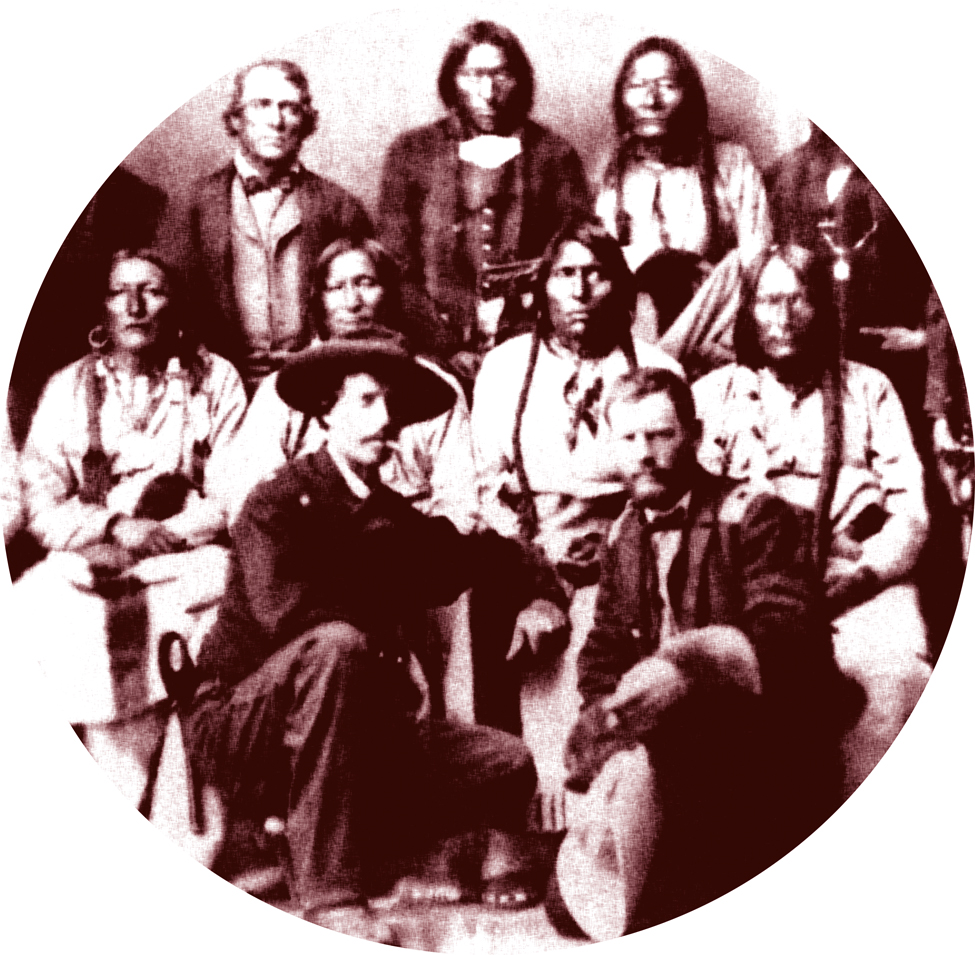
This is a cropping of the famed Camp Weld image that was taken after Governor John Evans and Colonel John Chivington met with Cheyenne and Arapaho leaders that Major Edward (Ned) Wynkoop (kneeling left) escorted to Denver in late September 1864 after he had met with them on a tributary of the Smoky Hill River in Kansas earlier that month. This is not the image that I used in Ned Wynkoop and the Lonely Road from Sand Creek, but is a cropped version of the original by an unknown person. Sitting directly behind Wynkoop is Southern Cheyenne Peace Chief Black Kettle (and who, with the Chiricahua Apache war leader Geronimo, I would gladly trade one year of my remaining life to be able to spend two weeks with these gentlemen). John Smith is standing left behind Black Kettle. The meeting on the Smoky Hill tributary was the first time that Smith and Wynkoop worked together after Wynkoop insisted that Smith translate for him at Fort Lyon at the beginning of the month (and this was their first connection since the threat of hanging Smith in 1858). Wynkoop needed an interpreter and he had only one choice—Smith. The events of September 1864 led to a four-year working relationship that neither Smith nor Wynkoop wanted. That month also began Wynkoop’s friendship with Black Kettle, a friendship that led to his turning his back on racial prejudice and accepting Cheyennes and Arapahos as human beings. … That is Captain Silas Soule kneeling next to Wynkoop. He was forced to participate in the attack on the Sand Creek village (Wynkoop wasn’t present at the attack as he was in transit to Kansas to await a potential court-martial). At Sand Creek Soule refused to fire his weapons. In 1864 he spoke out about the savage and brutal mutilation of men, women, and children and in 1865 testified about the attack. He was murdered in the streets of Denver in April 1865.
Don’t you doubt for one minute that the threat of death did not affect John Smith in the coming years. Don’t you doubt that he never forgave Wynkoop and the others that threatened his life. Almost six years later events forced Smith and Wynkoop to work together, and they would do so for another four years. Neither Smith nor Wynkoop liked or wanted this relationship, but they made the best of it. Knowing my connection with Wynkoop over the years, it’s a safe bet that my view of Mr. Smith has been less than sparkling. But times change with deeper research and understanding of people’s actions. … While struggling to understand how the people that I have chosen to propel Sand Creek and the Tragic End of a Lifeway toward conclusion I’ve found Smith to be a major player. Every time I turn around there he is again.
Damn you Smith! Go away and hide!
You’re gobbling up precious word count.
Too many historians tell us how bad a person John Smith was, but alas they don’t do much showing us why they damn him to hell as an evil creature. They make no attempt to understand his actions or the actions that affected his life. This said I am in the middle of trying to find primary source material that proves beyond a doubt why the Arapahos wanted nothing to do with him. This is absolutely key and I must locate it. … ‘Course Mr. Smith, who walked between the races for decades, survived as a key U.S. interpreter for Wynkoop and even more impressive as the interpreter for all the Cheyenne-U.S. treaties. If he was the “liar” as some historians proclaim, why didn’t he end up with a knife in his guts, why weren’t his sexual organs hacked off, and why didn’t he meet a sudden end?
Let’s return to my belief that actions define a person and when documented allow readers to decide how they view the person being examined.

LK art of a debonair John Smith in the early 1860s. If I use this image in the Sand Creek book I need to improve the final product for it needs more work. (art © Louis Kraft 2016)
The book contract allows me 37 images, and currently I’m planning to have three maps. That leaves 34 images, and at the moment at least three could feature Smith. … And this is because I am discovering a man who had a lot more to offer than his less than sparkling relations with Wynkoop. … I try not to repeat images in my books, but one will definitely be reprinted in Sand Creek and the Tragic End of a Lifeway, and that is the Camp Weld image of Black Kettle, Bull Bear, Neva, John Smith, Silas Soule, and Ned Wynkoop that was taken shortly after Governor John Evans, Colonel John Chivington, Black Kettle, and other chiefs spoke on 28sept1864 (see the above group shot). Most likely only one of the other Smith images will make it into the final book, but whichever one makes the final cut will be of massive importance.
What I know to date is that every image that I have seen of John Smith was taken when he was in a controlled area and was dressed in dapper clothing. Ladies and gents, John Smith walked between the races and he married American Indian women. It is not a huge stretch to surmise that he did so because he loved them (and perhaps because he saw that an interracial marriage presented him with an opportunity to trade with the Cheyennes). Yes, he could have married them because he thought that by doing so would have opened a large door of trading with native people, but this is a stretch in today’s thinking and an even larger stretch during Smith’s lifetime. … John Smith ventured westward at the time of the trappers, and although marrying into one tribe might have saved his scalp with the people he chose to marry into it didn’t preserve it in the eyes of all the tribes at war with his new wife’s people. What did John Smith gain from such a marriage? Yes, when the day of trapping neared its end might have been reason for such an interracial marriage, but to date I haven’t been privy to Smith’s views on his marriages (if indeed they exist somewhere; alas, this is unlikely). Did Smith know that he would become an Indian trader? Probably yes, but also maybe no. … Like rebels of our time he didn’t fit in with his time. Before taking that huge step and marrying an American Indian woman he knew that such a relationship would immediately cast him as an outsider to his own race, and a man to be scorned. Without a doubt he came to respect the Indians he associated with, and especially the Cheyennes (again, I have seen zero proof in Smith’s words, but I do believe there is enough documentation of his actions to support this view). Add the correct woman, and Smith gladly accepted a racial marriage at a time when it was almost universally rejected. This was a brave decision by him, and one that he had to have made with his eyes wide open.
A possible dust jacket
I have at times used an image of a photo that I took of the Pawnee Fork village site in Kansas to represent Sand Creek. I did this to use a dark representation of a horrific murder of people who thought that they were under the protection of the U.S. military.
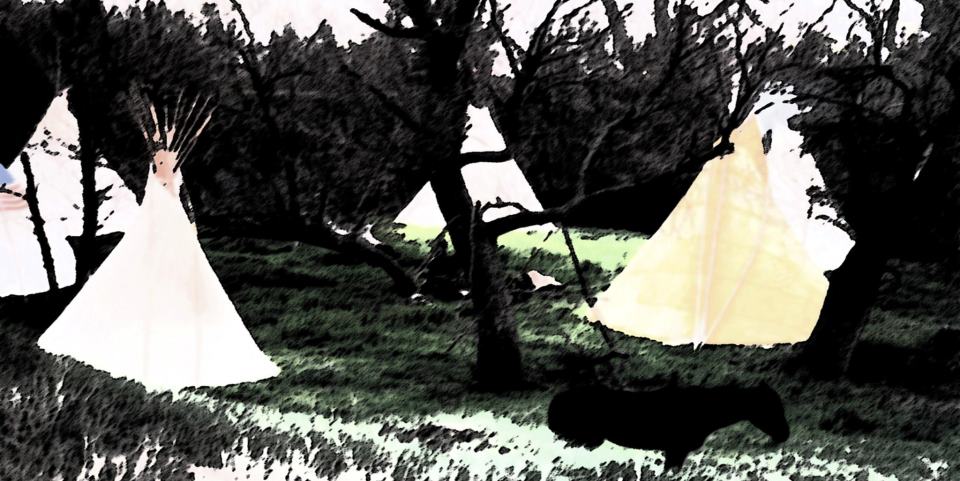
This image was created from a photo that I had taken of a Cheyenne re-enactor village on the Pawnee Fork village site in Kansas in modern times. I had turned it into line art, darkened the image and have at times used it to represent the 1864 Sand Creek village. My friend and historian Eric Niderost has panned me for using this image more than once, and he’s right. Still I needed an image to represent the Sand Creek village. Not to worry for this image will never appear in any of my books. (art © Louis Kraft 2013)
I’m having a terrible time trying to come up with a good illustration for the cover of Sand Creek and the Tragic End of a Lifeway. I hate the way-over used painting by Robert Lindneux of the assault that resulted in the murder of way-too-many innocent people at Sand Creek (as I don’t think that it is accurate). … As you know, I dabble in art for my articles and books but I have absolutely nothing that could possibly represent my Sand Creek manuscript.
For the record I also hate dust jackets that have a bunch of portraits (photos or art). In the case of Sand Creek and the Tragic End of a Lifeway an assembly of Black Kettle, John Chivingrton, George Bent, John Evans, Little Raven, Ned Wynkoop, George Shoup, William Bent, William Byers, Bull Bear, Silas Soule but without key player Left Hand as we don’t know what he looked like, would be pure crap. These covers tell us nothing, and as far as I’m concerned they were created because the writer had no opinion and the art director at the publishing house was clueless.
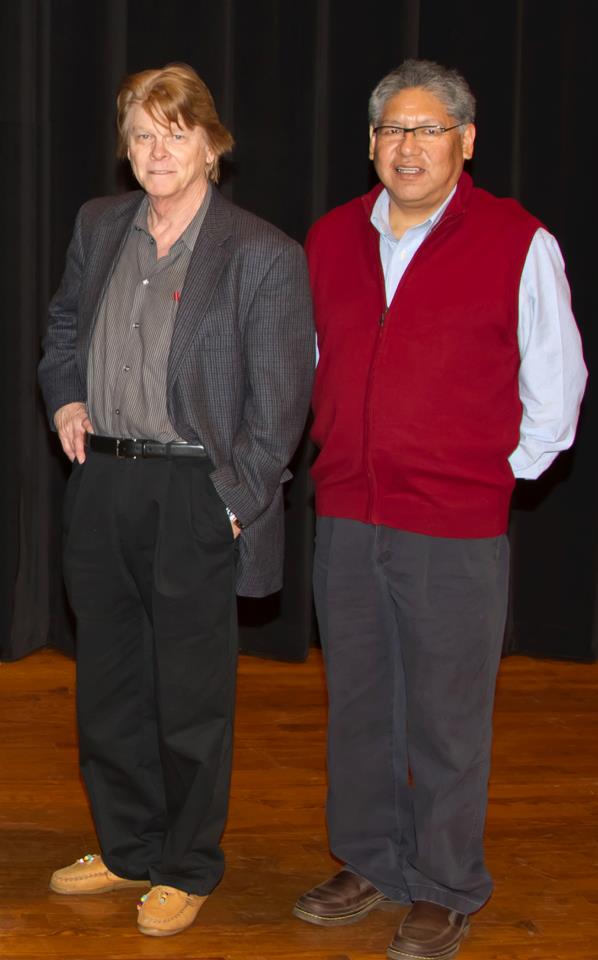
LK with Gordon Yellowman at the conclusion of the Washita Battlefield National Historic Site symposium on 12nov2011 (this is the correct date). (photo courtesy of the Washita Battlefield NHS)
What do I currently have? Nada (Nothing).
Or do I? … There is a print that I purchased, framed, and then hung in Tujunga House as soon as I returned home from my first Fort Larned National Historic Site speaking engagement in Kansas in 1999. (See “Sand Creek” above.) It was at that event when I first met Gordon Yellowman, who also spoke at the event. His art is a great rendering of that tragic day of the butchery of innocent people.
There’s one problem, and it is a major one, Chief Yellowman’s painting is landscape where most book cover jacket artwork is portrait. How do I deal with this? … I think I know the answer, but I can’t/won’t deal with it until Editor-in-Chief Chuck Rankin and OU Press are in line with my tardy text delivery. I was slow and took forever to deliver Ned Wynkoop and the Lonely Road from Sand Creek. With luck all will be good with my Sand Creek manuscript delivery. When Chuck and I agree with my current manuscript, and not until then, my focus must be on the research and words. Until then nothing else counts, for if my words and storyline fail there is no book.
A printable manuscript is absolutely mandatory before we move into the publication process. To repeat myself, until Chuck and I agree that the manuscript is ready to go to press, and only then, it is not time for me to move forward into a world that I have at times not been welcome. … Over the years I’ve had some book covers that I like, and have played a part in a number of the covers. I designed Custer and the Cheyenne (nothing more need be said here), I created the art for Gatewood & Geronimo, it was upon my insistence to use the 1861 Wynkoop portrait and colorize or duotone it for Ned Wynkoop and the Lonely Road from Sand Creek, and I created the art and designed the book cover for The Discovery.
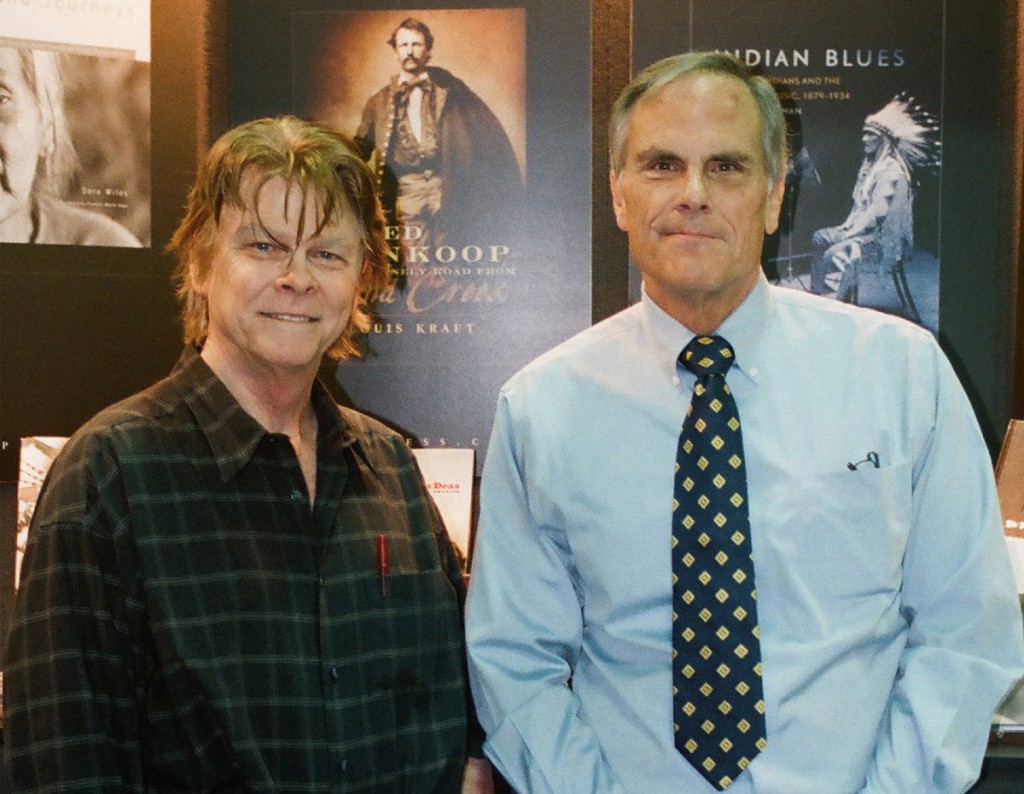
LK with OU Press Editor-in-Chief Chuck Rankin at the Western History Association convention in Oakland, California, on 15oct2011. OU Press created the poster for Ned Wynkoop and the Lonely Road from Sand Creek (seen behind us) for the event. Chuck kindly gave it to me, I had it framed, and it is displayed at Tujunga House. (photo © Louis Kraft & Chuck Rankin 2011)
I know, the above sounds egotistical. It isn’t, for I’ve played a major role in over 200 other book covers (that don’t count for they were in the software world), and that doesn’t include the five or six that I designed for Upton and Sons, Publishers, in El Segundo, California. Give me a break! I know what is good design and I know what is bad design, and that said I’ll never push for bad design for any of my freelance books. Never! And you can take that to the bank.
You can bet that once Sand Creek and the Tragic End of a Lifeway moves into production, and Chuck and crew are in agreement with my view of Chief Yellowman’s art, I will approach Gordon. When we get to this point, hopefully he’ll agree that his art would make a magnificent book cover. But, and this is important, if the press’s art director insists that Gordon’s art won’t work because it is landscape I will approach Gordon to see if we could compromise. BTW, my playing with size proportions and using the Wynkoop book dimensions lead me to believe that we can use Gordon’s entire painting with small black bleeds to the left and right, a slightly larger bleed above the top, and a larger bleed below his art for the title and author credit.
I’m a firm believer in reaching for the stars. …
Finally a dark side that we cannot ignore
Our life, and ultimately our future, is based upon our past. It is on us to correctly document our history (and I’m talking about your history and my history). If we can’t honestly do this how can we move into our future? We need to know who we are and how and why we have become who we are. … We live on one earth, and we are but one people even though our colors, religions, politics, and races are different. The key here is people, one people—us. It is on us to get beyond all our greed and fears and hatreds and accept all of us as one. … For only then will we get beyond attacking and raping and murdering other people because their god is different, they have land and resources that we crave, and that we must decimate or dominate them to insure our freedom and safety.
Again, we are one people on one earth. If we fuck it up, or if they fuck it up—we all lose.
